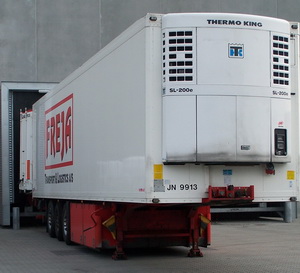Refrigerated Transport
When you do grocery shopping, you will see various frozen food products such as meats, fish, frozen fruits and vegetables and dairy products in freezers. You will also find fresh produce, meats and fish in superb condition. Have you ever wondered how these got to your local supermarket from whence they came while still retaining their quality? The answer is refrigerated transport.

Refrigerated transport is a means of moving perishable products such fruits, meats, vegetables, dairy products, pharmaceuticals and chemicals that need to be kept in controlled conditions. A refrigerated transport can maintain the temperature required to keep the product in top-quality condition, whether it needs a cool or frozen environment.
Uses of Refrigerated Transport
- The food industry is one of the major users of refrigerated transport. Suppliers of fresh produce like vegetables and fruits need to maintain the freshness of their products during the long journey from the farm to the supermarkets and retailers to ensure that when the food reaches the consumers’ plates they are still fresh and safe for consumption. A refrigerated transport keeps the temperature cool enough to keep them fresh. Meat and fish products also need to be transported in freezing temperatures to ensure that they will be safe for human consumption even after days on the road. Dairy products which easily spoil when exposed to warm conditions need to be kept cool.
- The use of refrigerated transport is not exclusive to the food industry. The medical and pharmaceutical industries also require controlled conditions for many of their supplies and products such as medicines, vaccines and chemicals that are sensitive to temperature variations. Hospitals and research facilities also require refrigerated transport for organs needed for transplant or biological specimens that are subject for study.
- The manufacturing industry also employs refrigerated transport for shipping of products or supplies that need controlled temperature to sustain the quality of the items. There are chemicals that need to be kept at low temperatures to retain its usefulness.
Forms of Refrigerated transport
The simplest form of refrigerated transport is the use of coolers or jugs filled with ice packs, loose ice or dry ice. These are used in carrying small quantities of items that need to be kept cool such as food and drinks for a picnic, biological samples and organs for medical or research use. This crude form of refrigerated transport is capable of keeping the temperature of the container low for a few hours to a few days.
For transport of huge quantities of food supplies, pharmaceuticals and chemicals, refrigerated vehicles are used. Trucks, vans, trailers cars and cargo are often used by shipping companies for refrigerated transport of sensitive items. They are equipped with cooling or refrigeration systems which can sustain low or freezing temperatures for longer periods of time.
Refrigerated transport can be provided by shipping companies at extra cost. There are also companies that specialize in this type of service. However, because refrigerated transport uses more fuel to keep the refrigeration unit running, it is much more expensive than ordinary shipping. But users of refrigerated transport find the additional cost worth it rather than have the products or supplies wasted because of uncontrolled conditions.